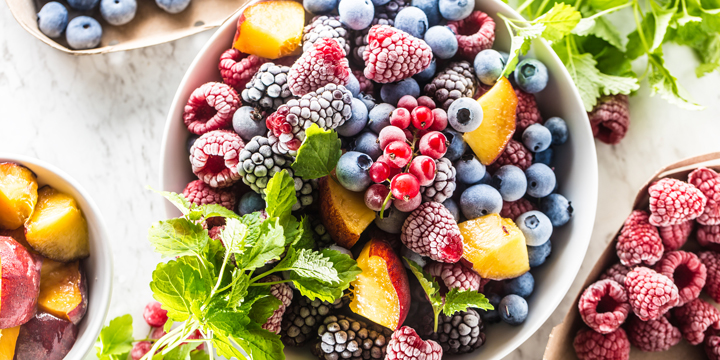
Living with type 2 diabetes means paying careful attention to your diet, particularly your intake of carbohydrates, which directly impact your blood sugar levels. While fruits and vegetables are essential components of a healthy diet, not all are created equal in terms of their effects on blood sugar. Understanding which fruits and vegetables to choose can help you better manage your diabetes and maintain overall health.
It’s important to consider the glycemic index and glycemic load
When considering fruits and vegetables, it’s essential to understand the concepts of glycemic index (GI) and glycemic load (GL). The GI measures how quickly a food raises blood sugar levels, while GL takes into account the GI and the amount of carbohydrates in a serving. Foods with a high GI can cause rapid spikes in blood sugar, which can be harmful for people with diabetes. Opting for low-GI foods can help maintain more stable blood sugar levels.
Starchy vs non-starchy vegetables – what’s the difference?
Diabetes dietitians separate vegetables into two groups: non-starchy and starchy vegetables.
Non-starchy Vegetables. Most vegetables are non-starchy. These contain very little carbohydrate and are good sources of fibre, so they have a very limited impact on blood glucose levels. For example, a portion of non-starchy vegetables contains less than 5 grams of carbohydrate.
All vegetables also contain many vitamins and minerals, in addition to fibre, so they have a positive effect on our health. Choose dark green and brightly coloured vegetables such as spinach, kale, salad greens, tomatoes (technically considered a fruit), and bell peppers as often as possible.
Starchy Vegetables. Starchy vegetables also contain lots of nutrients but are slightly higher in carbohydrate than non-starchy vegetables. This means they have some effect on blood glucose levels. Starchy vegetables include potatoes, parsnips, peas, squash, beans and corn.
Are some fruits better than others?
All fruits contain natural sugars, which will have some impact on blood glucose levels. However, fruits also contain abundant nutrients so they should be included in moderation in a diabetes meal plan. Just be sure to watch the portion size. For example, Diabetes Canada measures one medium apple, orange or pear as having the same amount of sugar as half a mango or one small banana.
Choose lower GI fruits more often such as berries, peaches, pears, apples and cherries. Even though some fruits such as ripe bananas, pineapples and watermelon have a higher glycemic index, this doesn’t necessarily mean you can’t eat them, but you may need to watch the portion size you eat.
Choose fresh or frozen fruits in preference to canned fruit, where possible. If canned fruit is the only option, choose fruit packed in fruit juice instead of fruit packed in syrup.
Other ways to manage blood sugars when eating fruits and vegetables
Eat the fruit and vegetable skins. The fibre count of a fruit or vegetable reduces the carb count. Since peels contain fibre, you can reduce the carb count by carefully washing fruits and vegetables, and eating them with the peel on.
Combine fruits and vegetables with proteins and healthy fats to slow down sugar absorption and keep you full longer.
Easy ways to increase fruit and veggie intake
With both fruit and vegetables, fresh and raw is best, but baked, grilled and steamed are good cooking methods that help to retain important nutrients. Wherever possible, avoid frying foods. Generally speaking, 1 cup fresh = ½ cup cooked.
Buy veggies and fruits pre-washed and pre-cut. Make up a crudité plate of raw vegetables with a healthy dip for snacking. Make batches of vegetable soups and store in the freezer for fast and easy lunches, when accompanied by a protein.
Look to fruits as the basis for delicious desserts. You can buy sugar-free whipped toppings, or try a sauce like pureed raspberries over a perfectly ripe peach or a poached or pear. Or combine fruit with plain yogurt for a fruit and protein combo. In the summer, grilled fruit makes for a yummy dessert!
Remember, the key is to choose wisely, focusing on low-GI options and balancing your meals to maintain stable blood sugar levels. Always consult with your healthcare provider or a registered dietitian for personalized advice tailored to your health needs.



